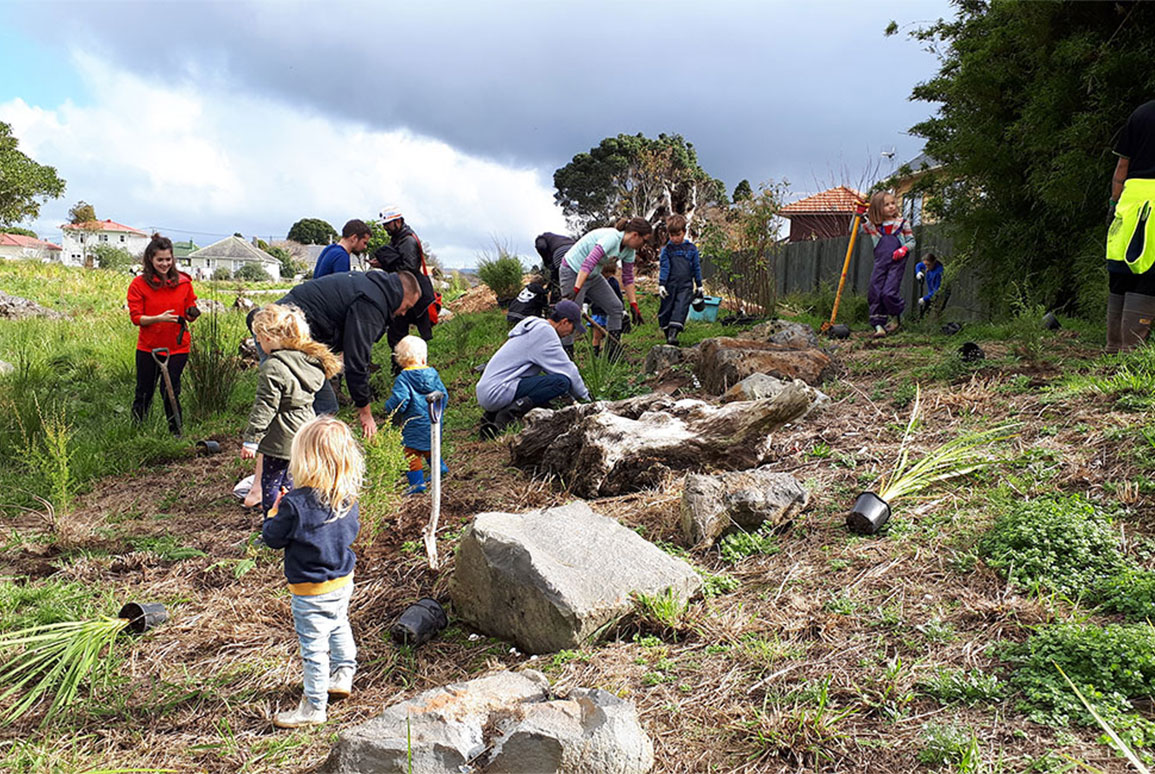Social procurement: an opportunity for lasting impact
7 January 2020
Put simply, social procurement is intentionally purchasing goods or services to generate people-focused benefits that extend beyond the goods and services required.

As individuals, many of us practice social procurement without conscious design. It’s the decision to get fruits and vegetables from the Farmers Market, rather than from the multi-national grocery store. Or happily paying a bit more for clothing from a New Zealand-based designer or buying a craft beer from a local purveyor.
When it’s done on a large-scale level, by governmental agencies or similar organisations; the positive community, cultural and environmental outcomes generated by social procurement can be impactful and self-sustaining. Because of this, social procurement frameworks are increasingly being included in Government and Council-funded projects.
A social procurement framework can help address issues like a lack of diversity in the workforce (under-represented ethnic groups, age groups, or genders); a shortage of skills or training (especially within certain demographics); or provide support to under-funded community groups or schools.
“It’s increasingly a prerequisite that vendors, contractors or consultancies find ways to bring social procurement initiatives into projects,” says landscape architect John Potter, a partner in Boffa Miskell’s Auckland office, who was project director on the Ōtāhuhu Streetscape Upgrade project.
In Auckland, The Southern Initiative (TSI) champions, facilitates and enables social innovation in an area covered by the four local board areas of Māngere-Ōtāhuhu, Ōtara-Papatoetoe, Manurewa and Papakura.
In 2017, the Ōtāhuhu Streetscape Upgrade project tenderers were required to provide paid work-experience to tertiary students studying design. As a result, through TSI networks, two students were given part-time work with Boffa Miskell.
“We had to think about what role, as design consultants, we could play,” says John. “It’s straightforward for some vendors — construction contractors, for example. Apprentices or new trainees can be up-skilled on the job, and quite quickly become more employable, or worth a larger paycheque. But we needed to do things differently.”
“We offered comprehensive mentoring and committed to involving the students in all phases of the project,” says project manager Yoko Tanaka. “There were some challenges at first. We needed someone fairly specific — we were looking for a landscape architecture student or graduate, from a particular neighbourhood, who was available and who had the basic skill set we required.”
The project managers set out strategies for developing the candidates and meaningfully integrating their evolving skills into the design process. A year-long work experience plan included opportunities for involvement in contract management, concept design, developed design and detailed design.
Although this required a great commitment of time and effort, Yoko says the reward was “… passion. It was a project for the Ōtāhuhu community; so hiring a person from there and presenting them an opportunity to use their skills in a very real way for the benefit of their community — it brings a positive energy to the project team and to the office, and that positivity can be quite contagious.”
“Local people also bring local perspective,” adds John. “They know the site; they know how residents use the space. An external consultant is just not privy to that kind of knowledge.”
At Te Auaunga (a Boffa Miskell/Auckland Council Healthy Waters project) social procurement initiatives were undertaken by various project partners.
“In addition to physical improvements to the stream and reserves, the project delivered many social benefits to the community, including a local plant nursery employing disadvantaged youth and long-term unemployed, and apprenticeships on a work-to-employment scheme,” says project design lead Mark Lewis.
A youth employment scheme led by Unitec and Auckland Council saw a dozen young people complete a Level 2 certificate in Construction, and the majority went on to work at the project site or with other contractors.
Te Whāngai Charitable Trust, a planting nursery and contractor who provide wrap-around support and opportunities for people on welfare, within corrections, or in recovery from drugs and alcohol; set up a nursery at Mt Roskill Intermediate school, which required 60 employees per year, several of whom later were hired by the civil contractor for the project.
The school has curriculum days in the nursery, and are reporting improvements in the school roll, reduced vandalism, and reduced groundskeeping costs through a maintenance partnership.
In a recent interview, Adrienne Dalton, founder of Te Whāngai Charitable Trust said, “It’s about collective impact and it’s about community taking ownership of their own.”
Te Auaunga was presented to the Mayors’ Sustainability Forum as an exemplar for social procurement. “These initiatives fostered community place-making and development, and gave a voice to local community aspirations,” says Mark.
“Ultimately, social procurement frameworks can provide the kind of outcomes that Government and Councils have committed to; and that drives the behaviour of the consultants and the contractors involved in transformative large-scale projects,” John explains. “It’s now almost ‘business as usual’ for construction vendors and contractors to include social procurement initiatives at the tender stage.
“As design consultants, we need to figure out the most effective way for us to provide that mentoring, within the overall project scope. We have seen first-hand — through projects like Te Auaunga and the Otāhuhu Streetscape Upgrade — the very real benefits. We’re consciously seeking out ways to include social procurement initiatives into the work we do, because it brings about a better result.”
For further information please contact John Potter, Yoko Tanaka or Mark Lewis

